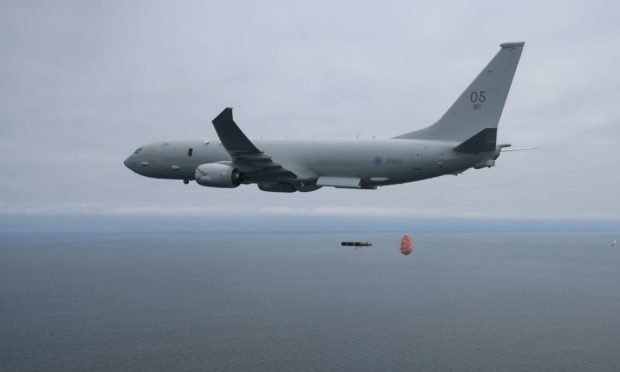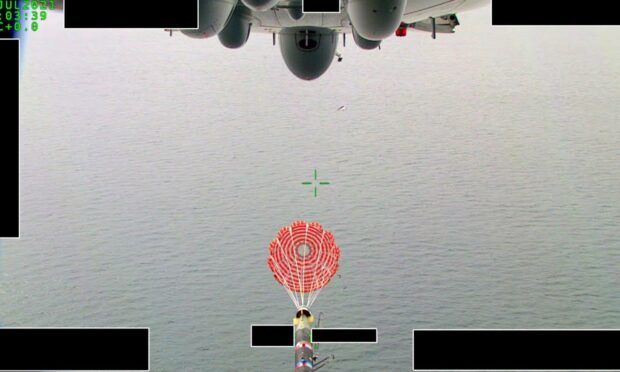A submarine hunter aircraft has released recoverable torpedoes over the Moray Firth for the first time.
Taking off from RAF Lossiemouth, the Poseidon patrol aircraft dropped exercise variants of the Mark 54 Lightweight Torpedo to simulate hunting down submarines.
Specialising in anti-submarine warfare, the Poseidon is the RAF’s multi-role maritime patrol aircraft.
Working alongside the Royal Navy and close maritime allies such as the US and Norway, Poseidon locates, identifies and tracks potentially hostile submarines operating around UK waters.
And, at just under 3m long and 32cm in diameter, the torpedos are small and light enough that the Poseidon aircraft can carry five in its internal weapons bay.
The real torpedoes are equipped with high-explosive warheads capable of destroying enemy submarines – warheads that can be tracked and located by the aircraft’s crew.
“We can deliver them whenever needed”
The successful release of a torpedo is the latest milestone in the rapid development of the Poseidon in RAF service.
Squadron Leader Dave Higgins was in charge of the project to release the torpedo.
He said: “It’s been a great privilege to witness the hard work of so many talented individuals across the Royal Air Force, civil service and industry partners come together to enable us to launch and recover this torpedo.
“This exercise has proved everything is in place for our weapon technicians to rapidly get these torpedoes onto our aircraft, so we can deliver them wherever and whenever they are needed.”
Next step forward for the Poseidon at RAF Lossiemouth
Five Poseidon MRA1s are based at RAF Lossiemouth, with a further four sets to be delivered by the end of this year.
The station, which is situated close to one of the aircraft’s most frequent area of operations, is benefiting from a multi-million-pound investment programme bringing significant economic benefits to the Highlands & Islands and Morayshire communities.
Announced by the defence secretary, Ben Wallace earlier this year, RAF Lossiemouth is to receive a £230 million investment to grow the UK’s submarine hunter fleet.
The funding will also create 153 jobs with more than 100 positions based in Moray.
A few months ago, it was announced that a sixth submarine hunter aircraft would arrive at RAF Lossiemouth and be christened Guernsey’s Reply to honour a Second World War pilot.
Back in May, the P-8 Poseidon plane underwent final checks in the US and is now due to arrive in the north-east in September to join the five already in operation.
The aircraft will be the first to join the reformed 201 Squadron, which was disbanded 10 years ago and has a historic link with the Channel island, alongside 120 Squadron, which already operates Poseidons on the Moray coast.

